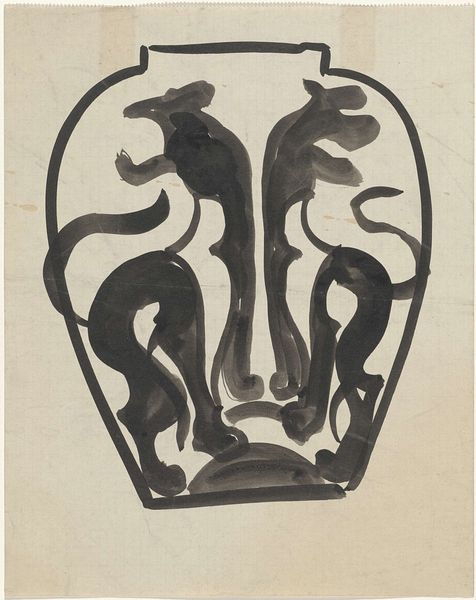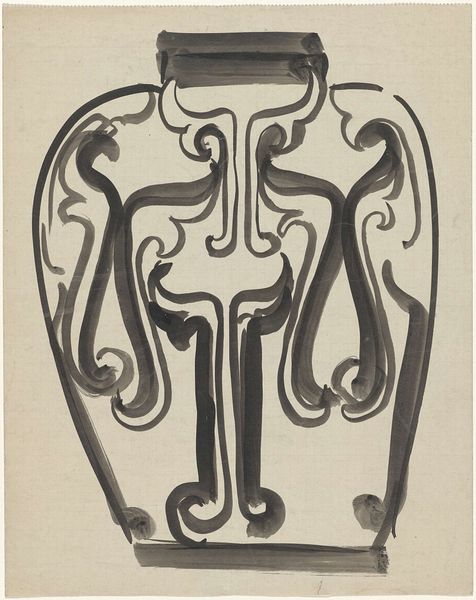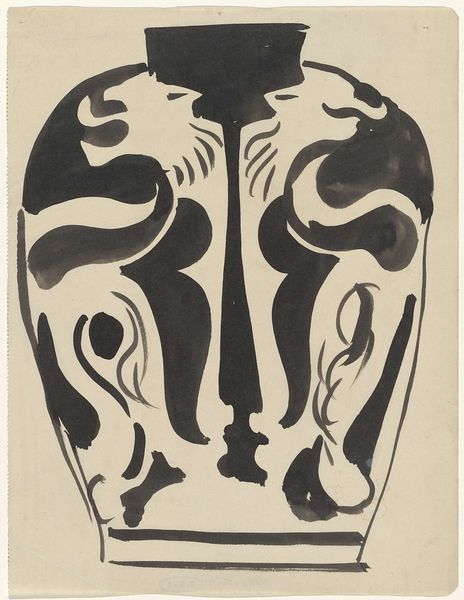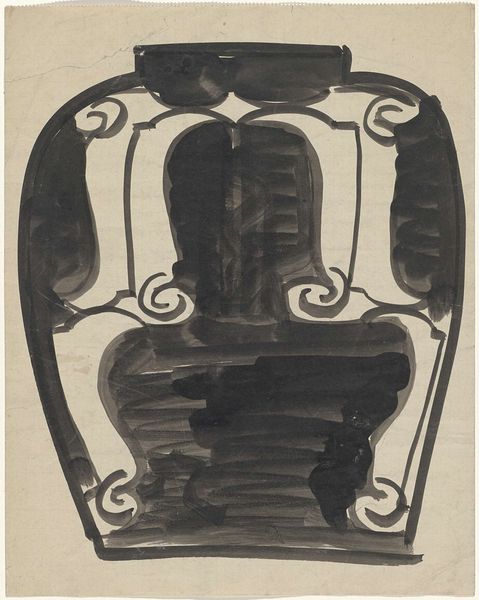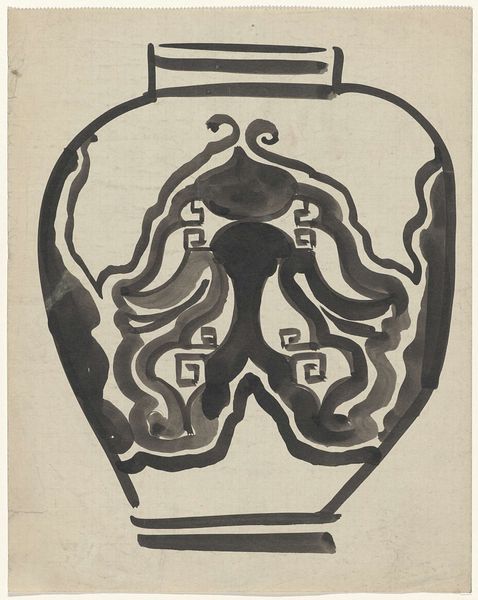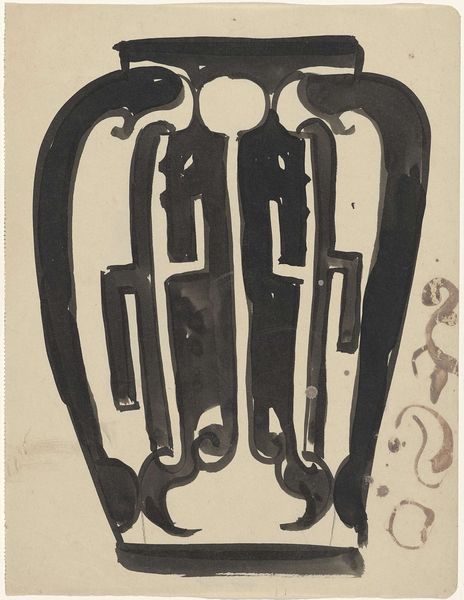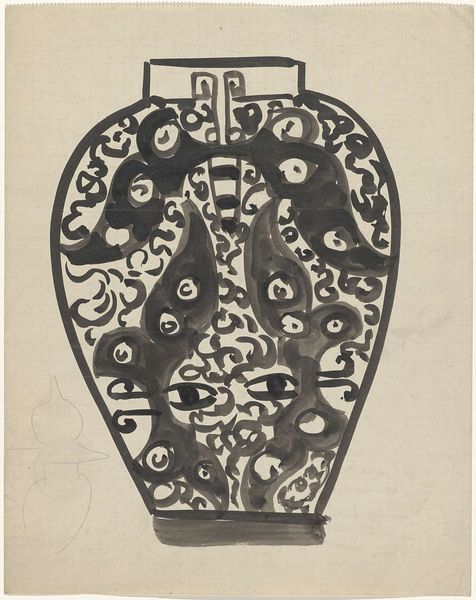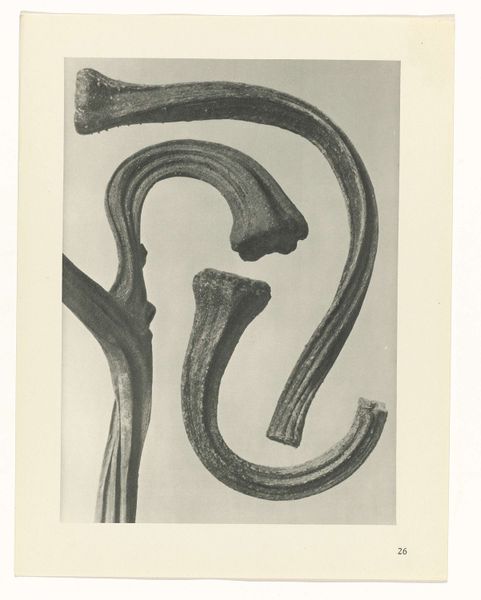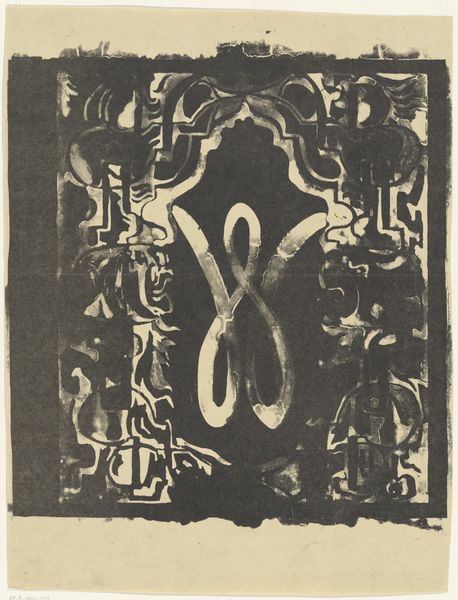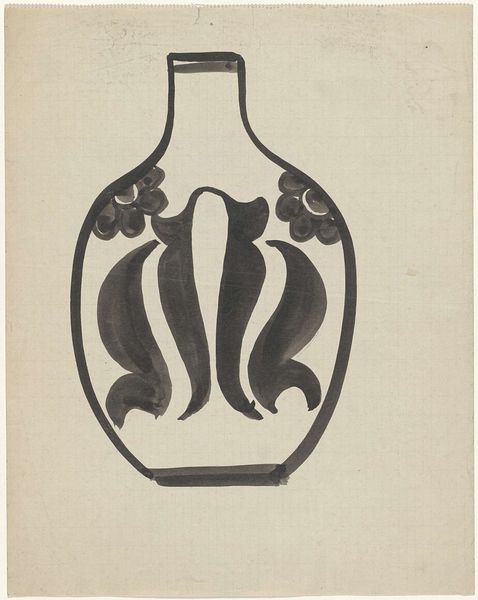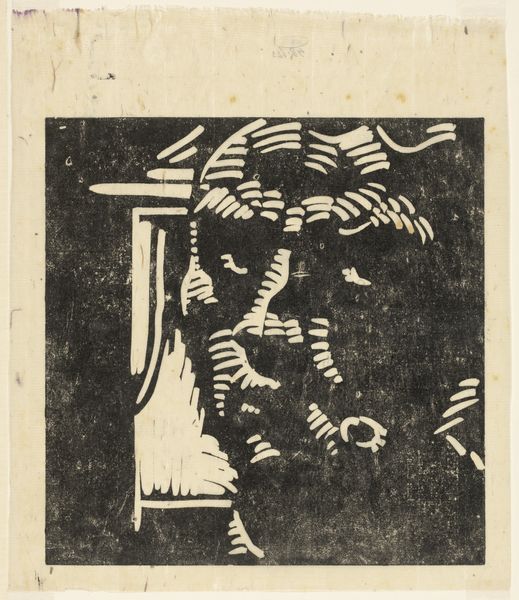
drawing, ink
#
drawing
#
caricature
#
vase
#
form
#
ink
#
line
#
symbolism
#
decorative-art
Dimensions: height 277 mm, width 220 mm
Copyright: Rijks Museum: Open Domain
Editor: This is Carel Adolph Lion Cachet's "Design for a vase with lion motif," created sometime between 1874 and 1945, using ink and drawing techniques. The strong black ink strokes forming the lions give it such a bold, almost graphic feel. What jumps out to you? Curator: For me, the emphasis lies in understanding its means of production. This isn't just about appreciating the aesthetic; it's about recognizing the artistic labour, the craftsman's engagement with the materials – the ink, the paper – and the cultural consumption this vase was intended for. Considering the period, the repetitive nature of design elements suggests industrialized processes, what do you make of the stark forms? Editor: I see how the repetitive design could link to industrialization, but the handmade quality of the ink drawing feels like a counterpoint to that idea. It feels intentionally rough. Curator: Exactly! The rough quality pushes us to challenge that traditional high art versus craft boundary. Was this vase meant for mass production, or was the design intended for something more exclusive? Was Cachet perhaps critiquing the mechanization of art through his deliberately crude, bold strokes, reasserting a connection to materiality and the hand-made object? How do you see the symmetry of the lions playing into that tension? Editor: I think the symmetry feels really interesting in relation to that. On one hand, symmetry speaks to standardized, repeatable designs. But, equally, mirroring the lions feels almost primal, maybe referencing older decorative traditions. Curator: Precisely! And that's where the beauty lies – in questioning the socio-economic context surrounding its creation, the tension between craft and industrial production, and what that meant for artists during that period. Editor: I’m really glad you brought that up. Looking at the design now, I’m much more curious about the role this vase would have played, how it circulated, and what kind of labor went into potentially reproducing it. Curator: And that’s materiality in action! Shifting our focus from pure aesthetics to consider the means and context of its making and its intended circulation.
Comments
No comments
Be the first to comment and join the conversation on the ultimate creative platform.

